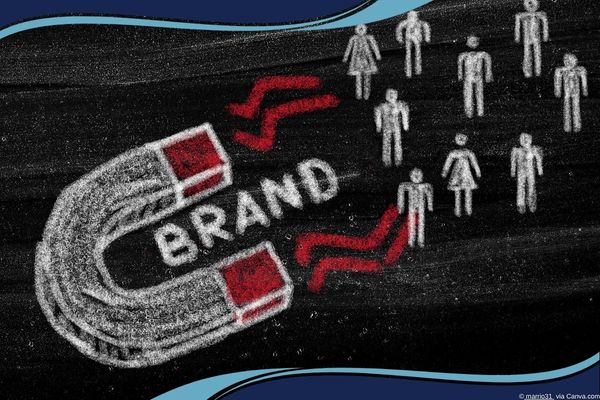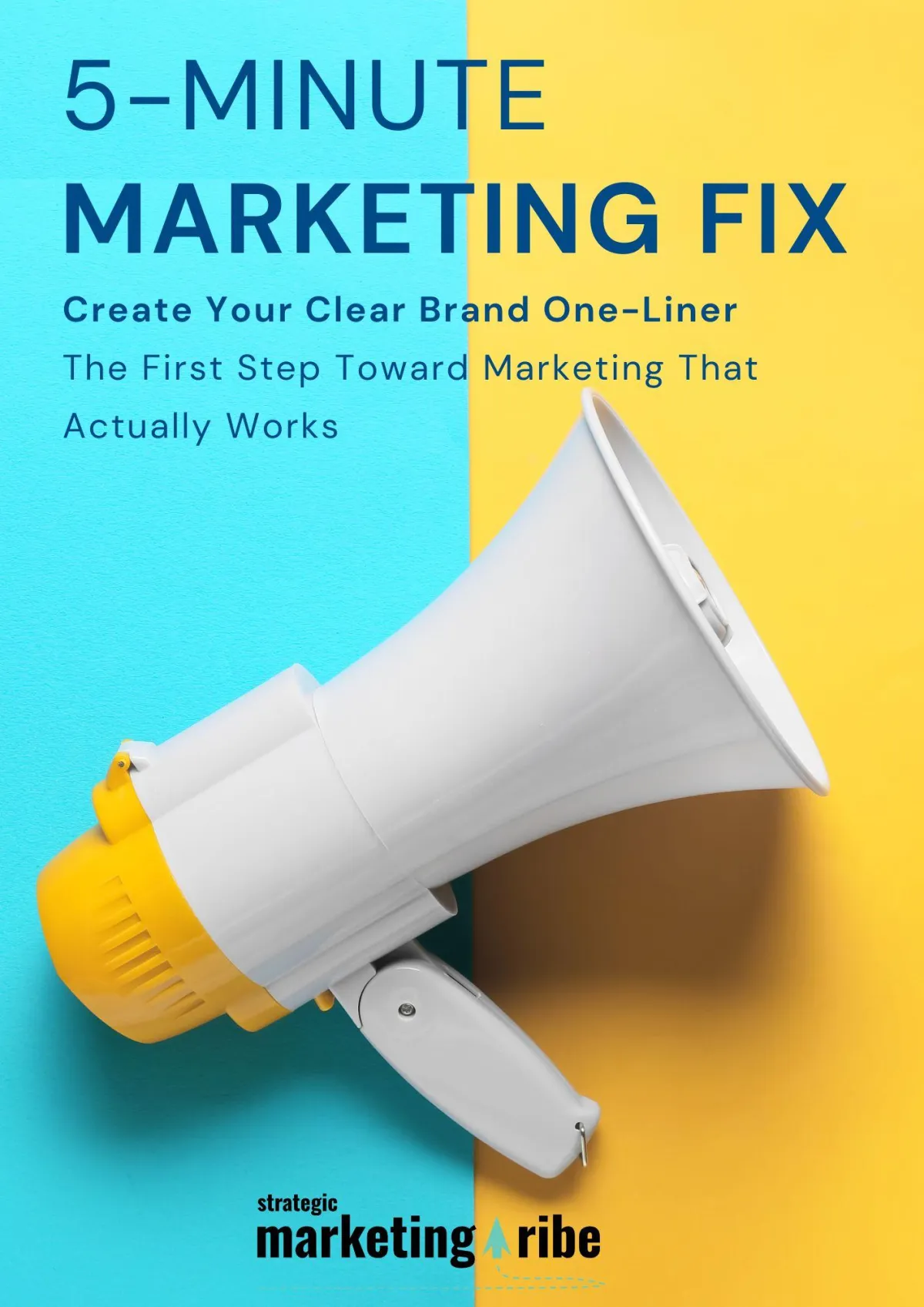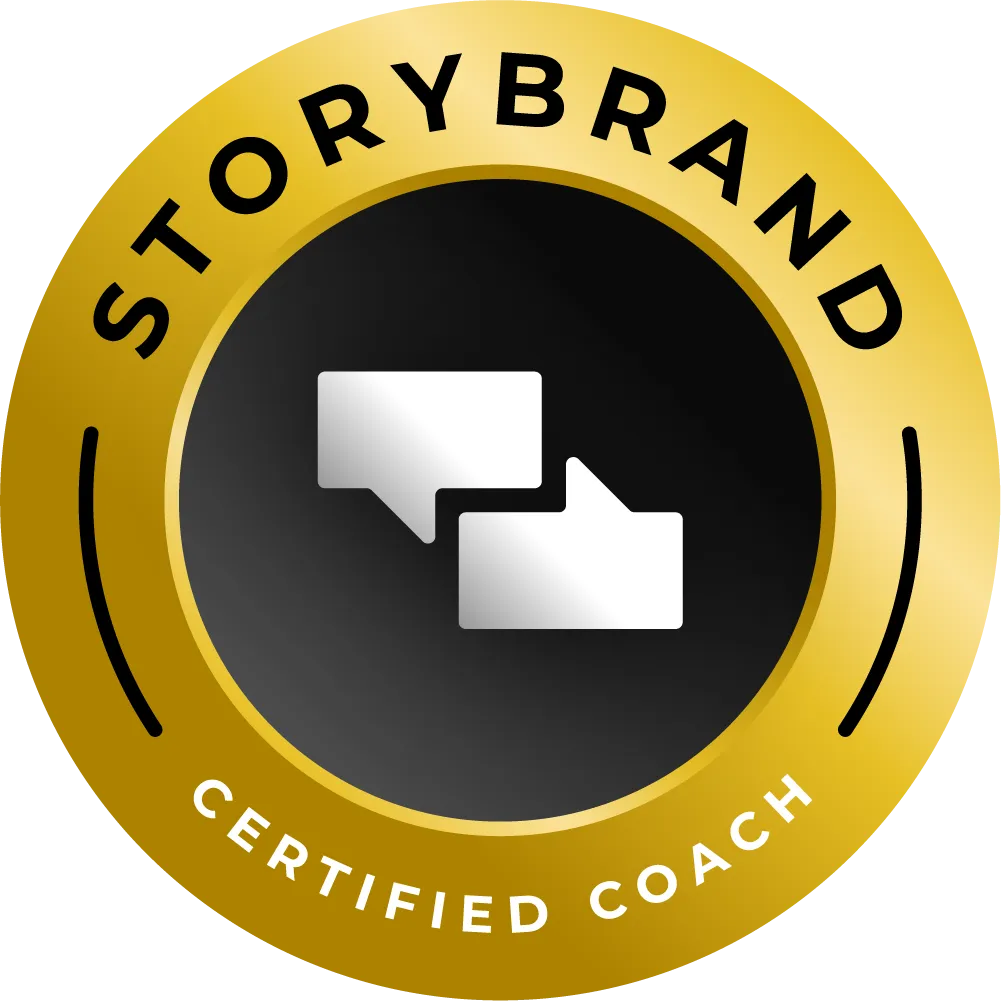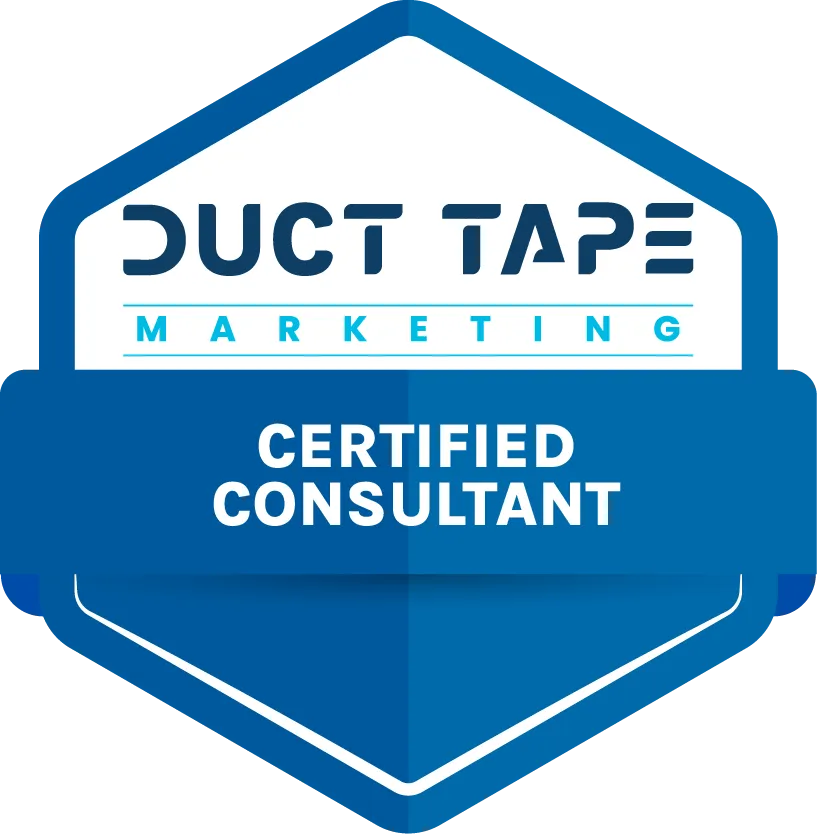STORY, MEET STRATEGY
Let’s make marketing feel less robotic and more real.
Find resources that bring your message—and your business—to life.

Brand Guidelines for Small Business: Why They Actually Matter
By Vicky Sidler | Published 11 November 2025 at 12:00 GMT+2
If your business logo has stretched more than a pair of old sweatpants, this one’s for you.
I’m Vicky Sidler, a StoryBrand Certified Guide and Duct Tape Marketing strategist who believes most small businesses are still winging it when it comes to brand consistency. And that’s costing them trust, recognition, and a whole lot of wasted design time.
But the solution isn’t a rebrand. It’s a document.
Let’s talk brand guidelines.
TL;DR:
Brand guidelines keep your visuals and tone consistent
Consistency builds trust, speeds up design, and makes you look like a real business
Every small business should have a style guide—even if it’s just a simple PDF
Include your mission, logo use, color codes, fonts, voice, and image style
Use free tools like Canva or Google Slides to build one
👉 Need help getting your message right? Download the 5-Minute Marketing Fix
Table of Contents:
Brand Guidelines for Small Business: Why They Actually Matter
Why Small Businesses Need Brand Guidelines (Even If You’re a One-Person Show):
Start With Why—Your Brand Isn’t a Logo:
The Logo Rules—Stop the Stretch:
Choose Your Colors Like You Mean It:
Fonts Matter (Even If You’re Not a Designer):
Brand Voice—Write Like a Human, Not a Robot:
Create It, Share It, Actually Use It:
1. Content Marketing Strategy Framework Every Small Biz Needs
2. Brand Strategy Framework on One Page? Here's How
3. How to Find Your Unique Selling Proposition the Free Way
4. StoryBrand Certified Guide Helps Fix Small Biz Messaging
5. Free Target Audience Research That Actually Works
6. Surviving the AI Slop Era: A Marketing Guide for Small Business
7. The Complete Guide to Strategic Marketing
FAQs on Brand Guidelines for Small Businesses
1. What exactly are brand guidelines?
2. Why do small businesses need brand guidelines?
3. What should be included in brand guidelines?
4. Do I need a designer to create brand guidelines?
5. How long should my brand guidelines be?
6. How often should I update my brand guidelines?
7. What happens if I don’t use brand guidelines?
8. Can brand guidelines help with marketing?
Why Small Businesses Need Brand Guidelines (Even If You’re a One-Person Show):
Big brands have marketing departments and branding agencies. You have Tuesday afternoons and a few Canva templates.
That’s exactly why brand guidelines matter more for small businesses.
Without a guide, every new flyer, Instagram post, or email looks like it came from a different company. And when things feel inconsistent, people don’t feel confident in your offer—no matter how good it is.
Brand guidelines help you:
Look professional, even with a lean team
Speed up content creation by giving clear answers to design questions
Avoid the back-and-forth (and internal panic) of “Wait, which blue are we using again?”
Train new team members or freelancers in minutes instead of weeks
Keep everything aligned with your values and message
You don’t need a fancy PDF with animations. You need a simple document that tells everyone, “This is how we show up.”
That’s what builds trust. That’s what builds a brand.
Start With Why—Your Brand Isn’t a Logo:
Before we get into color codes and minimum logo sizes, start with the big stuff. Why does your business exist? What do you stand for? Who are you here to help?
Your brand guidelines should open with:
Mission and vision statements
Core values
Your origin story
Your target customer
This part is often skipped, but it’s the section that turns a set of rules into a living, breathing brand.
“Our brand stands for: an escape, a community, a haven.”
That’s not fluff. That’s focus.
The Logo Rules—Stop the Stretch:
Your logo needs boundaries. Literally. Brand guidelines should show:
All logo variations (full, icon-only, with or without tagline)
Where and how to use each one
Minimum size and required clear space
Color options for light and dark backgrounds
Examples of what not to do (like rotating it 37 degrees or slapping it on a busy photo)
Also include where to find the files. Your designer will thank you. So will future you.
Choose Your Colors Like You Mean It:
Most people remember a brand by its color before anything else. Tiffany didn’t become Tiffany by accident.
In your own brand kit, be sure to list:
Primary colors (used most often)
Secondary and accent colors
The codes: HEX, RGB, CMYK, Pantone
Where and how to use each
Ratios, like 60/30/10, to avoid rainbow chaos
Want bonus points? Add a short note on why you chose those colors. It helps keep future design decisions on track.
Fonts Matter (Even If You’re Not a Designer):
Your typography needs just as much consistency as your logo. As you do this, make sure you outline:
Main font and where to use it
Secondary font if you have one
Font sizes and hierarchy (H1, H2, body text)
Line spacing, weight, and fallback fonts for the web
Stick to 1–2 typefaces. This is not the place for creativity. This is the place for clarity.
Images Should Feel Like You:
Are you going for polished studio shots or real-life photos of real people doing real things? Decide and document it.
Make sure to include:
Your photography style (light and natural vs. bold and editorial)
Types of photos to use (and avoid)
Editing preferences (saturation, color filters, etc.)
Composition tips and layout ideas
Stock photo no-nos (unless you want to look like a fake startup that sells productivity)
Your image style helps new team members and contractors get it right the first time.
Brand Voice—Write Like a Human, Not a Robot:
Tone is where small businesses shine—if they’re consistent. Use this section to define:
Your voice (3–5 words like friendly, honest, no-nonsense)
Tone per channel (social = casual, website = clear, support = empathetic)
Grammar and style choices (contractions, emoji, headline caps)
Words you love, words you avoid
A few do/don’t writing examples
On-brand: “We’ll help you figure it out.”
Off-brand: “Our revolutionary platform leverages proprietary solutions.”
Create It, Share It, Actually Use It:
Now that you know what goes in the guide, here’s how to get it done:
Collect all your existing brand assets
Use Canva or Google Slides to build your guide
Organize it clearly with examples on every page
Share it with your team and contractors
Keep it updated as your brand evolves
Even a 10-page PDF can change how people perceive your business.
When your brand looks the same across your site, social, proposals, and packaging, it tells people you’re legit. That builds trust. And trust builds sales.
If you’re not sure where to start, start with my 5-Minute Marketing Fix. I’ll help you get your message right before you even open Canva.
Related Articles:
1. Content Marketing Strategy Framework Every Small Biz Needs
Once your brand guidelines are in place, the next step is using that voice and tone across all your content. This framework shows you how to do it.
2. Brand Strategy Framework on One Page? Here's How
Your brand guidelines explain how to show up. This article clarifies why it all matters by boiling down your brand strategy into one clear, usable page.
3. How to Find Your Unique Selling Proposition the Free Way
A polished brand is great—but your audience still needs a reason to choose you. This article helps you find that reason using free tools and customer insights.
4. StoryBrand Certified Guide Helps Fix Small Biz Messaging
Clear messaging makes all your visuals and tone more effective. This post shows how a StoryBrand Certified Guide helps small businesses get the right words in place.
5. Free Target Audience Research That Actually Works
Your brand tone, color palette, and image style should all reflect who you’re speaking to. Learn how to define your audience using tools that don’t cost a cent.
6. Surviving the AI Slop Era: A Marketing Guide for Small Business
When every second post looks and sounds the same, strong brand guidelines help you stand out. This article explores why your voice matters more than ever.
7. The Complete Guide to Strategic Marketing
This is your big-picture playbook. It connects your brand guidelines to a full marketing system—from ideal clients to campaigns that actually convert.
FAQs on Brand Guidelines for Small Businesses
1. What exactly are brand guidelines?
Brand guidelines are a set of rules for how your brand should look, sound, and feel. They include your logo use, color palette, fonts, imagery, and tone of voice. Think of them as your brand’s instruction manual.
2. Why do small businesses need brand guidelines?
Because consistency builds trust. When your website, social media, and marketing materials all look and sound the same, customers see you as reliable and professional—no matter your size.
3. What should be included in brand guidelines?
Every good set includes your mission and values, logo rules, color codes, fonts, image style, and brand voice. Some also include templates for social media or business cards.
4. Do I need a designer to create brand guidelines?
Not necessarily. Tools like Canva, Google Slides, or Figma make it easy to create your own. The key isn’t fancy design—it’s clarity and consistency.
5. How long should my brand guidelines be?
For most small businesses, 10–15 pages is perfect. It’s enough to cover the essentials without overwhelming your team or freelancers.
6. How often should I update my brand guidelines?
Review them every 6–12 months or whenever your brand evolves. That includes changes to your offer, audience, or visual identity.
7. What happens if I don’t use brand guidelines?
Without them, your brand quickly becomes inconsistent. Different people use different colors, fonts, and tones, making your business look disorganised and less trustworthy.
8. Can brand guidelines help with marketing?
Absolutely. They make it easier to produce consistent content, speed up decision-making, and maintain a cohesive customer experience—especially across multiple platforms.
9. How can I share my brand guidelines with my team?
Save them in a central location like Google Drive or Dropbox. Include download links to official assets like your logo and fonts so everyone uses the same materials.
10. Where can I learn how to write a clear brand message?
If you’re unsure how to define your message before building brand guidelines, start with the5-Minute Marketing Fix. It will help you create a one-liner that guides everything else in your brand.

Created with clarity (and coffee)







